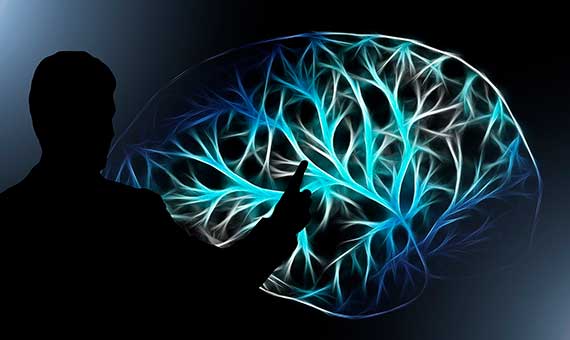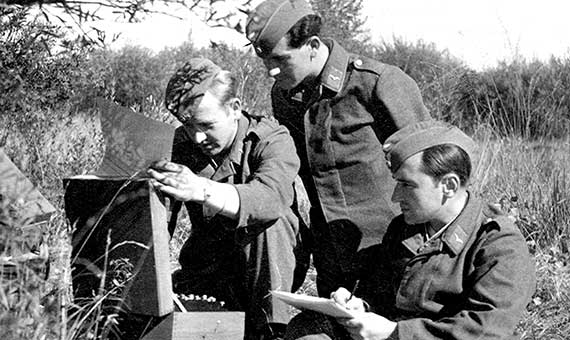One of the current challenges of neuroscience is to decipher the neural code, the language of the brain that is translated into movement. This is a fundamental step to be able to program devices that allow paralysis to be treated and to produce a new generation of prostheses. In December 2017, it was learned that US researchers had achieved promising results with a novel decryption technique similar to those used by allied cryptanalysts to defeat Enigma.
Until now, the usual method used by neuroscience to try to decipher the brain’s code that controls motility was to collect and process, simultaneously, the neuronal and motor activity and compare both in order to identify the underlying code. This is an equivalent situation, from a cryptographic point of view, to comparing an encrypted message with its decrypted version to try to identify the key or coding system.
But this approach requires time and a large volume of data for analysis. Returning to the comparison with classical cryptography, and in particular with the technique of frequency analysis, it is easier to identify which letters or symbols appear more often—those that encode the most-used letters of the alphabet—the larger the length of the encrypted message.

However, recently a team of neuroscientists from the University of Pennsylvania and the Georgia Tech Institute has implemented an alternative approach, much like the cryptographic techniques used by Polish cryptanalysts and, later, by their British colleagues, led by Alan Turing, to decipher the powerful German encryption machine Enigma. It is an approach based exclusively on the analysis of encrypted messages, which has also succeeded in decoding neuronal activity. The irony is that, as the head of the study, Konrad Kording, admitted in statements to OpenMind, at first they did not realize they were doing cryptography. “We were simply trying to solve a problem that we knew existed. We were only aware of it when we brainstormed to figure out what we were doing,” he says.
A fissure through which to penetrate the enigma
In the 1920s, when the Germans began to use the Enigma machine to codify their communications, they established a protocol that involved a day key and a message key. The day key was used to code the message key (composed of three letters) with which each communication was initiated; from that moment on, the message key was the one that encrypted (alone) the transmission. To avoid errors in receiving the message, the Germans typed the message key twice in a row. The Polish cryptanalyst Martin Rejewski noticed that the 1st and 4th, the 2nd and 5th, and the 3rd and 6th letters of each message respectively encoded the same letter of the original alphabet, whatever these were and independently of the content of the message. He had identified a pattern, a pattern that served as a shortcut to break Enigma.
During the Second World War, Alan Turing and the other British cryptanalysts faced a more sophisticated version of Enigma manned by forewarned operators. The great achievement of Turing was to detect the existence of “cribs”: fragments of original text associated with a piece of encrypted text. Though difficult to visualize, it is best understood with an example: Turing realized that every day, first thing in the morning, the Germans issued a weather report, and he sensed that the German word “wetter” (meteorological weather) would lead the text. In other words, the first six letters of the encrypted message, whatever they were, would be translated as “wetter.” This allowed him to establish an association between the encrypted message and the decryption, again, independently of the contents of the communication, a fissure through which to penetrate Enigma.

Hidden patterns in the neural activity
Without being aware of it, the neuroscientists from the University of Pennsylvania and the Georgia Tech Institute proceeded in a similar way: searching and identifying patterns that were repeated in all neural transmissions, so that they could be associated with a specific command or message.
If we apply the cryptographic analogy, it involves starting from the hypothesis that all the motor messages have parts in their structure that are repeated time and again. Something like: “extremity to receive the message-type of movement-degree of displacement.” Or, in other words: “right arm-elevate-30°”, “left leg-bend-45°”… In the words of the researchers, “basically what we did was to map the neural signals, the neural activity registers, to find hidden patterns that can be associated with a (command of) movement, as a good cryptanalyst would do.”
This achievement would make available a language to program cerebral devices and implants that would allow us to restore the mobility in people with injuries or illnesses. In the longer term, Kording points to new and ambitious goals for this approach: “I think that decoding the neural code that controls speech would be great.”
Miguel Barral
Comments on this publication